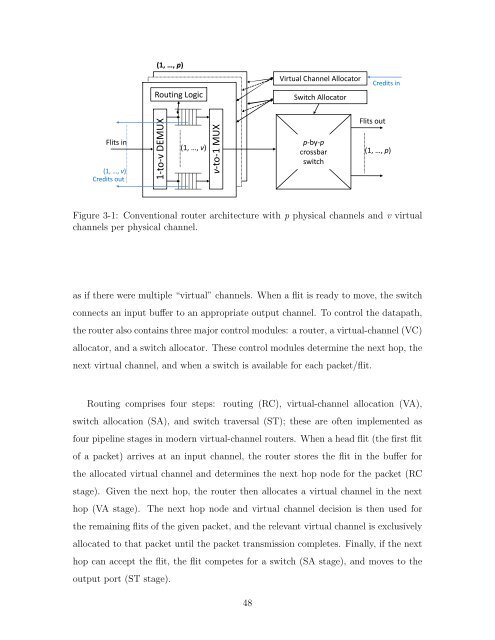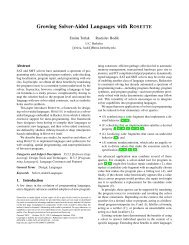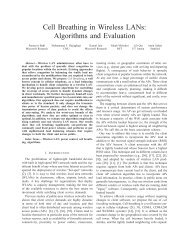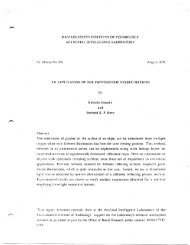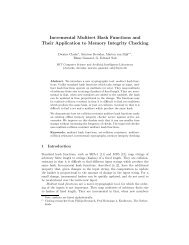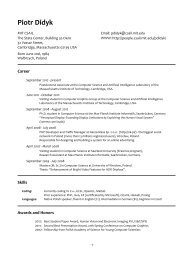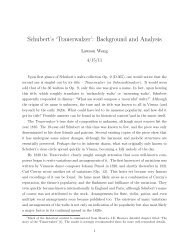On-chip Networks for Manycore Architecture Myong ... - People - MIT
On-chip Networks for Manycore Architecture Myong ... - People - MIT
On-chip Networks for Manycore Architecture Myong ... - People - MIT
You also want an ePaper? Increase the reach of your titles
YUMPU automatically turns print PDFs into web optimized ePapers that Google loves.
(1,…,p)<br />
RoutingLogic<br />
VirtualChannelAllocator<br />
SwitchAllocator<br />
Creditsinin<br />
Flitsinin<br />
(1,…,v)<br />
Creditsout<br />
1 tovDE EMUX<br />
(1,…,v)<br />
vto1M<br />
MUX<br />
pbyp<br />
p<br />
crossbar<br />
switch<br />
Flitsout<br />
(1,…,p)<br />
Figure 3-1: Conventional router architecture with p physical channels and v virtual<br />
channels per physical channel.<br />
as if there were multiple “virtual” channels. When a flit is ready to move, the switch<br />
connects an input bu↵er to an appropriate output channel. To control the datapath,<br />
the router also contains three major control modules: a router, a virtual-channel (VC)<br />
allocator, and a switch allocator. These control modules determine the next hop, the<br />
next virtual channel, and when a switch is available <strong>for</strong> each packet/flit.<br />
Routing comprises four steps: routing (RC), virtual-channel allocation (VA),<br />
switch allocation (SA), and switch traversal (ST); these are often implemented as<br />
four pipeline stages in modern virtual-channel routers. When a head flit (the first flit<br />
of a packet) arrives at an input channel, the router stores the flit in the bu↵er <strong>for</strong><br />
the allocated virtual channel and determines the next hop node <strong>for</strong> the packet (RC<br />
stage). Given the next hop, the router then allocates a virtual channel in the next<br />
hop (VA stage). The next hop node and virtual channel decision is then used <strong>for</strong><br />
the remaining flits of the given packet, and the relevant virtual channel is exclusively<br />
allocated to that packet until the packet transmission completes. Finally, if the next<br />
hop can accept the flit, the flit competes <strong>for</strong> a switch (SA stage), and moves to the<br />
output port (ST stage).<br />
48


